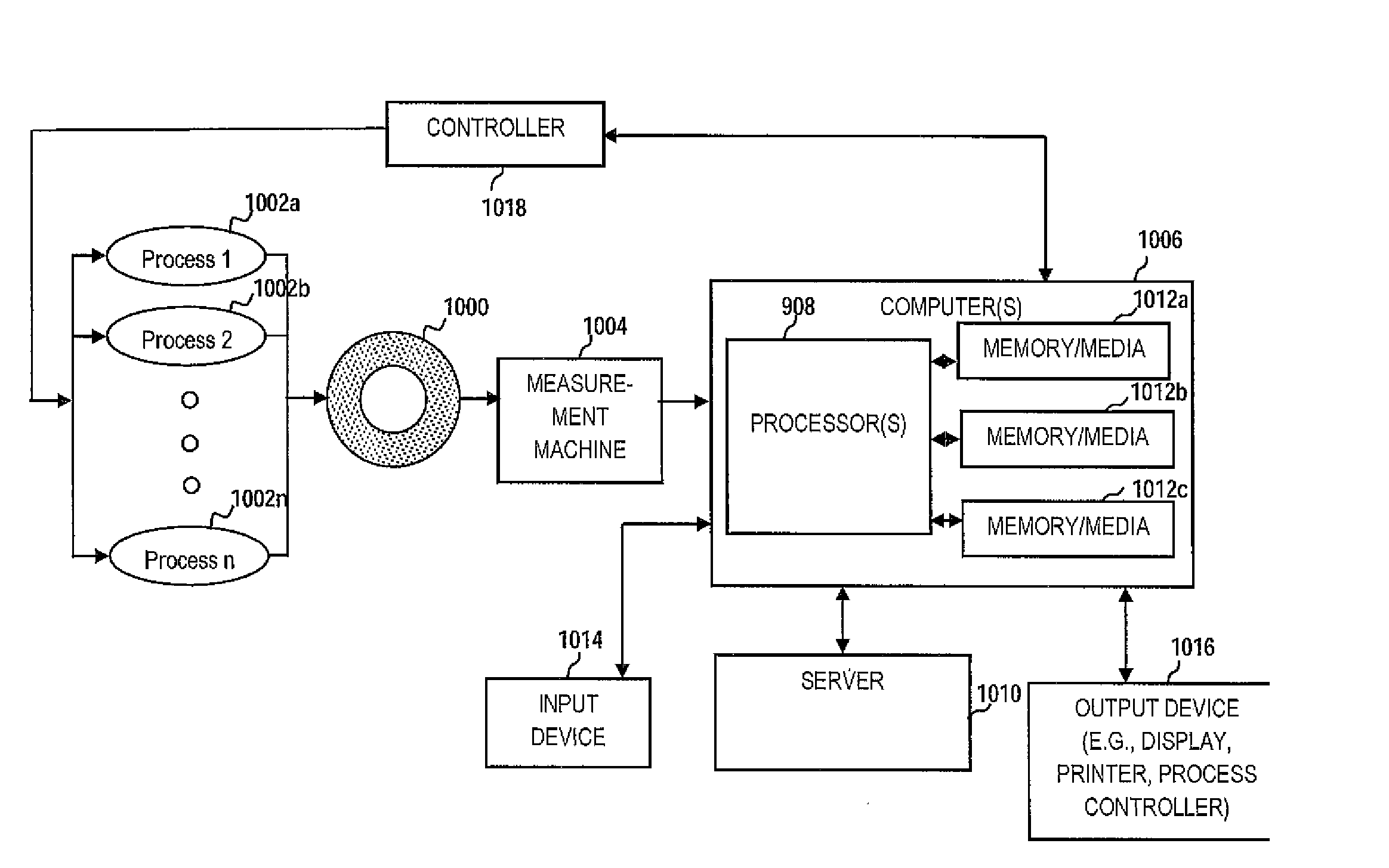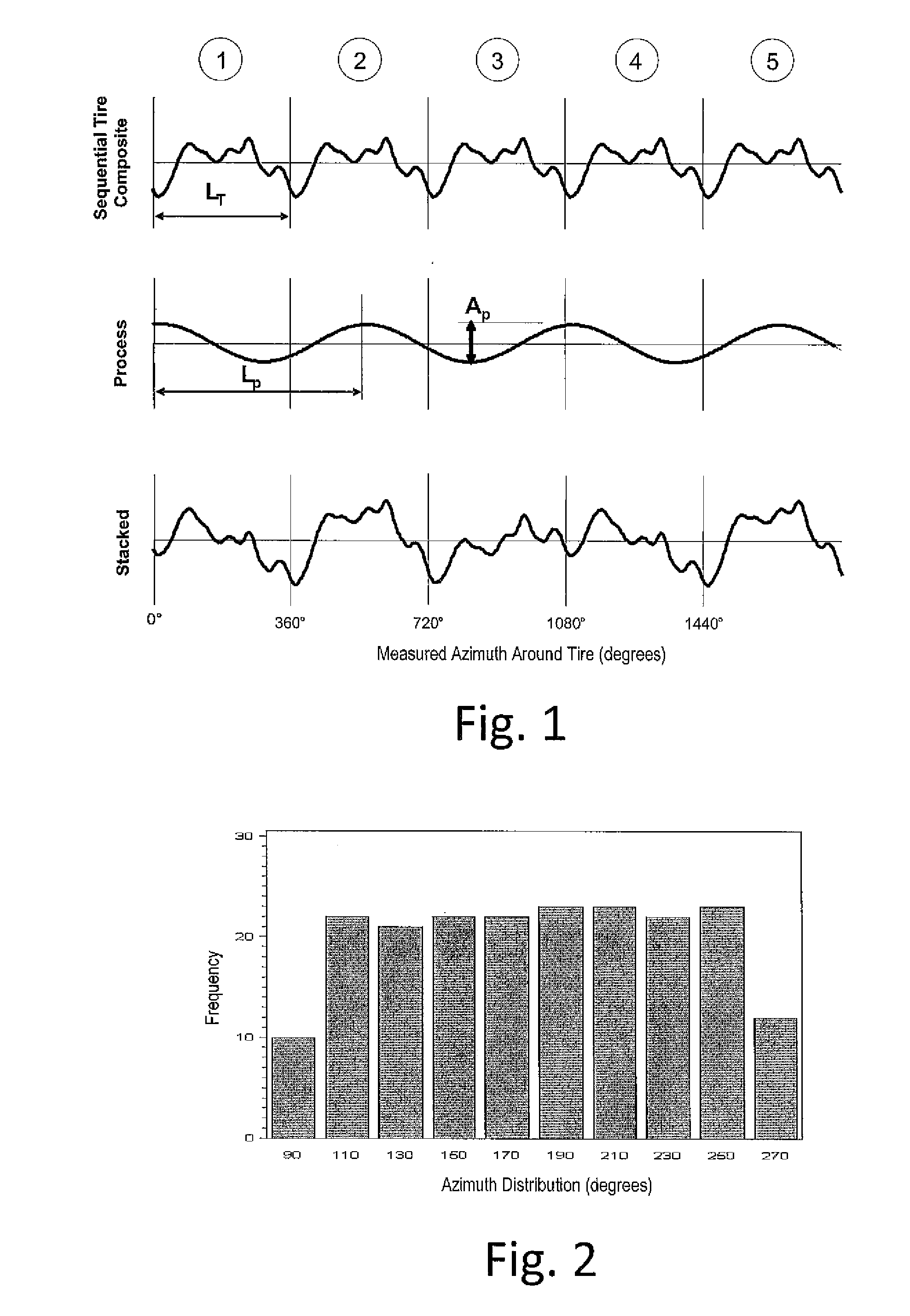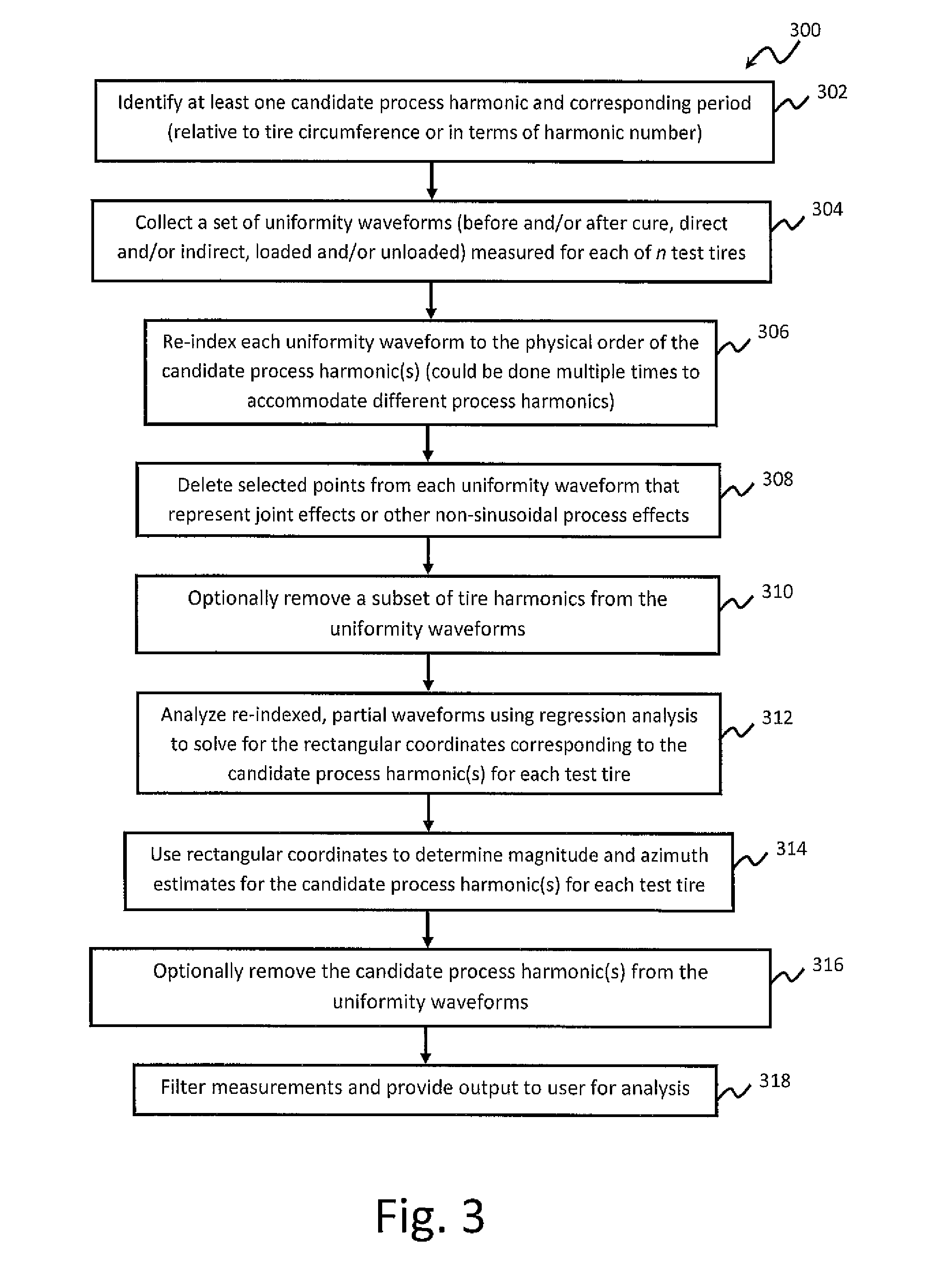Tire uniformity through identification of process harmonics using re-indexed partial uniformity waveforms
a process harmonic and uniformity waveform technology, applied in vehicle tyre testing, roads, instruments, etc., can solve the problems of tire non-uniformity, tire non-uniformity is important, and the non-uniformity present in the tire structure produces periodic-varying forces, so as to improve the uniformity of each individual tire and improve the uniformity of tires
- Summary
- Abstract
- Description
- Claims
- Application Information
AI Technical Summary
Benefits of technology
Problems solved by technology
Method used
Image
Examples
example 1
[0071]To better appreciate the techniques disclosed herein, particularly those represented in the flow charts of FIGS. 3 and 4, a numerical example of process harmonic based uniformity improvement is presented. This example illustrates how the disclosed techniques might be used in order to optimize the impacts of the manufacturing variations giving rise to process harmonics. Process harmonic optimization is an approach that seeks to oppose existing effects in order to balance them. Often, in practice, this means that one opposes a relatively uncontrolled process harmonic with a fixed harmonic from a tooling element such as a press. The optimization approach has the potential of making a tire better without requiring the simultaneous improvement of the components of the process. It can be used effectively to control the process with low cost while process improvement activities are being undertaken.
[0072]In accordance with such first example, step 302 involves identifying a candidate...
PUM
| Property | Measurement | Unit |
|---|---|---|
| circumference | aaaaa | aaaaa |
| physical order | aaaaa | aaaaa |
| radial force | aaaaa | aaaaa |
Abstract
Description
Claims
Application Information
 Login to View More
Login to View More - R&D
- Intellectual Property
- Life Sciences
- Materials
- Tech Scout
- Unparalleled Data Quality
- Higher Quality Content
- 60% Fewer Hallucinations
Browse by: Latest US Patents, China's latest patents, Technical Efficacy Thesaurus, Application Domain, Technology Topic, Popular Technical Reports.
© 2025 PatSnap. All rights reserved.Legal|Privacy policy|Modern Slavery Act Transparency Statement|Sitemap|About US| Contact US: help@patsnap.com



